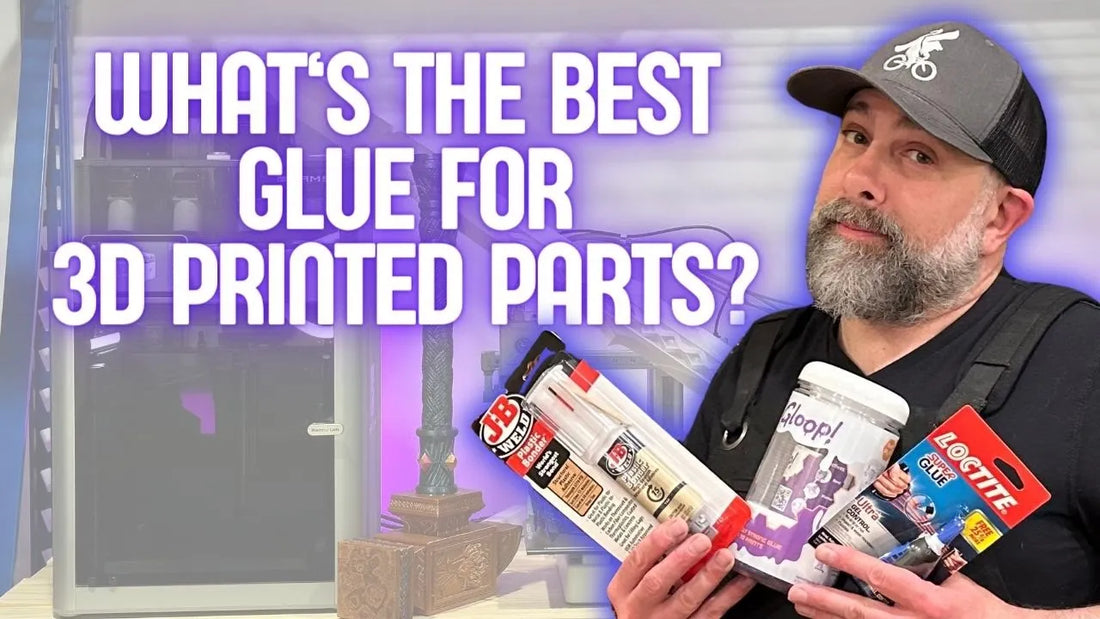Selecting the Right Adhesives for 3D Printing: 3D Gloop!, Super Glue, and JB Weld for Plastic
Using the appropriate adhesive can significantly impact the assembly and finishing of 3D Printed projects. 3D Gloop!, Super Glue, and JB Weld for Plastic are three adhesives commonly considered, each with distinct characteristics suited for different aspects of 3D printing.
3D Gloop!: Tailored for 3D Printed Materials
3D Gloop! is specifically designed to enhance 3D printing applications, making it an excellent choice for enthusiasts looking to improve both the structural integrity and aesthetics of their prints.
- Material Compatibility: Formulated specifically for PLA, ABS, and PETG, 3D Gloop! ensures optimal adhesion and compatibility with these materials.
- Applications: Beyond merely bonding parts, it excels in surface smoothing, reducing visible layer lines and improving bed adhesion during the printing process.
- Usage: Easy to apply and fast-setting, 3D Gloop! is highly effective but should be used with caution due to its potent fumes and skin irritant properties.
Super Glue: Quick Fix for Small-Scale Bonding
Super Glue, or cyanoacrylate, is favored for its rapid setting time, making it ideal for quick repairs and small assemblies in 3D printing.
- Fast-Acting: Its ability to bond quickly is advantageous for small parts that are difficult to clamp or hold manually while setting.
- Material Considerations: While effective on a variety of materials, it works well with plastics used in 3D printing, provided the surface is clean and properly prepped.
- Limitations: Super Glue is less flexible and can be brittle, which might not be ideal for parts that require a degree of flexibility or are under mechanical stress.
JB Weld for Plastic: Enhanced Bonding for Plastic Materials
JB Weld for Plastic is a specialized version of the classic JB Weld epoxy, formulated specifically to bond plastic materials, making it more relevant for 3D printing projects involving plastics.
- Strength and Plastic Compatibility: It provides a strong bond tailored for plastic materials, making it suitable for joining larger or heavier 3D printed parts that require durable connections.
- Targeted Applications: This adhesive is perfect for situations where parts are subjected to stress or strain, offering better flexibility and strength than standard epoxies for metal.
- Preparation and Safety: Similar to its general-use counterpart, JB Weld for Plastic requires mixing and careful application, along with adherence to safety precautions due to its potent chemical composition.
Conclusion: Matching Adhesive to Application
When choosing an adhesive for 3D printing, consider the specific requirements of your project:
- 3D Gloop! is best for enhancing the appearance and durability of prints tailored to common 3D printing filaments.
- Super Glue offers a quick solution for simple assemblies, though its brittleness may limit its use in structural applications.
- JB Weld for Plastic might be selected for projects that demand utmost strength and are less typical of everyday 3D printing tasks but still require the unique properties it offers.
As always, safety is crucial—ensure that all adhesives are used in well-ventilated areas and with appropriate protective gear.

